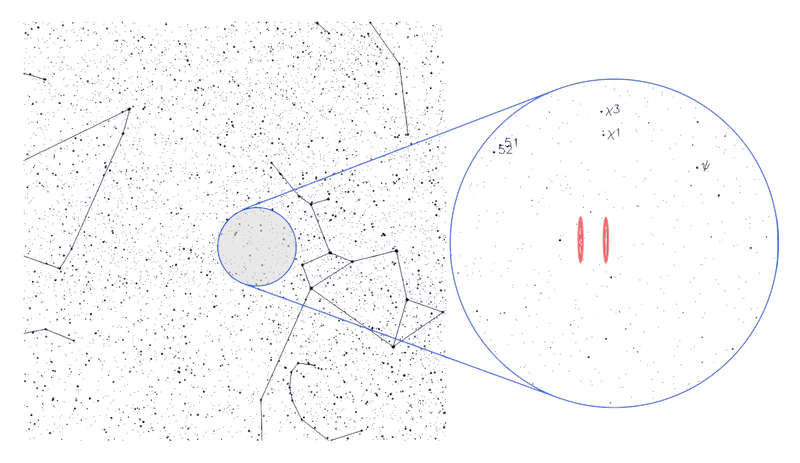
The famous Wow! Signal is still one of the most intriguing candidate radio signals ever found in the search for extraterrestrial intelligence (SETI). To this day, scientists have not explained its origin. The Ohio State University’s Big Ear radio telescope picked up the signal near the 21-cm hydrogen line at 1420 MHz. It was tantalizing. But it lasted only 72 seconds and then was gone … and has never returned.
Scientists searched, and watched, but never heard the signal again. Was it a case of radio interference from Earth? An unknown type of natural radio signal? Or could it, in fact, have been a genuine signal from an alien civilization? We may never know for sure. But astronomers are still trying to pinpoint its origin.
Now, the Breakthrough Listen team is reporting the results of their own search for a repeat of the elusive Wow! Signal. They published their new peer-reviewed paper in the September 2022 issue of Research Notes of the AAS.
Did the Wow! Signal come from a sun-like star?
The new search focused on the sun-like star 2MASS 19281982-2640123, which lies in the direction of the first detected signal. Moreover, it is much like our own sun, with similar temperature, radius and luminosity. It is 1,788 light-years away from Earth in the constellation Sagittarius. Previously, astronomer Alberto Caballero had identified the star in 2020 as a possible source for the Wow! Signal.
The original Big Ear radio telescope used two feed horns for listening, one positive and the other negative. Caballero’s team, using data from the Gaia mission, found 38 and 28 K- and G-type stars in the horns’ detectability range, respectively. Ultimately, the researchers identified 2MASS 19281982-2640123 as the only sun-like star that in that group.
The Breakthrough Listen team, however, used more advanced filtering criteria for analyzing the stars in the region. They actually found eight sun-like stars in the region where the Wow! Signal originated.
Breakthrough Listen used both the Green Bank Telescope (two 30-minute observations) and the Allen Telescope Array (six 5-minute observations). The search focused on the L-band portion of the radio spectrum (1-2 GHz). Specifically, the team looked for narrow band signals, which would be most likely to be artificial. Both telescopes scanned the sky for a period of nine minutes and 40 seconds.

New search for the Wow! Signal: nothing found
So, what was the result? Unfortunately, as with previous searches, the researchers didn’t find anything. As Breakthrough Listen stated:
No technosignature candidates were found, although there remains an abundance of other stars from which the signal could have originated.
As the paper noted:
Both telescope observations had an overlap of 580 s. While blind searches using radio telescopes have been conducted in the general field of view in which the Wow! Signal was first detected, this is the first time a targeted search has been done. No technosignature candidates were detected.
It’s another disappointing result, but as noted, there are at least eight sun-like stars in the region where the signal may have originated. Sooner or later, future observations could target some of these stars.
What about other stars?
In general, we think of sun-like stars as ideal targets, since life on Earth evolved with the same kind of star, our sun. But what about red dwarfs? Significantly, they are the most common type of star in our galaxy, and astronomers have found many exoplanets orbiting them, including rocky worlds like Earth. We don’t yet know what the chances are for life to originate on planets around red dwarfs, but from what we do know so far, it seems there’s a reasonable chance. How many of these stars are in the Wow! Signal listening zone?
Download the data sets from Breakthrough Listen
Bottom line: Scientists with Breakthrough Listen just conducted a new search around a sun-like star for the famous Wow! Signal detected in 1977. Unfortunately, they heard nothing.











